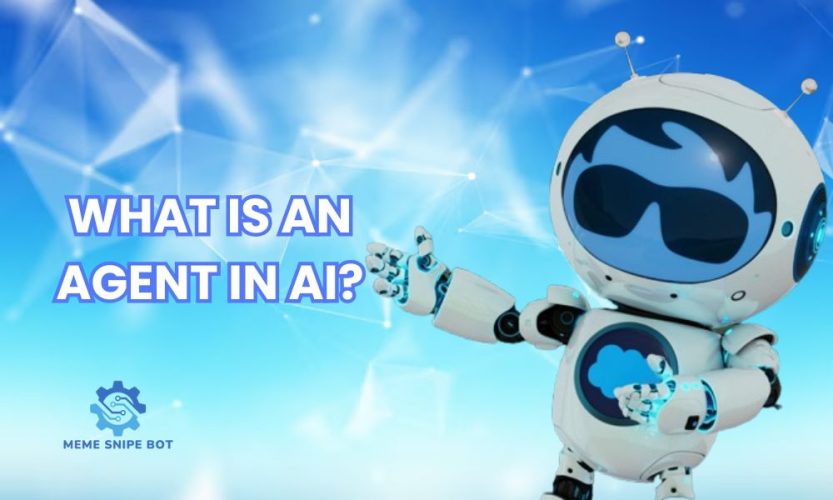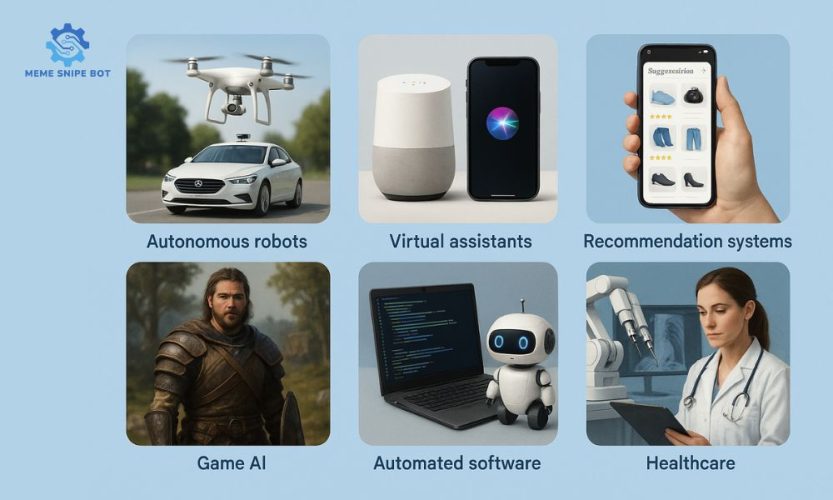What is an agent in AI? This key concept describes an entity capable of perceiving its environment through sensors and acting upon that environment using actuators to achieve specific goals. Understanding what an agent in AI is helps us grasp how intelligent systems, such as autonomous robots or virtual assistants, operate and interact with the world.
Contents
What is an agent in AI?
So, what is an agent in AI? Fundamentally, an AI agent (or simply, agent) is anything that can be viewed as perceiving its environment through sensors and acting upon that environment through actuators. The goal of an agent is to perform actions to achieve its objectives or optimize a certain performance measure.
To better visualize this, consider the PEAS (Performance, Environment, Actuators, Sensors) framework often used to describe an agent:
- P (Performance Measure): This is the criterion for evaluating the agent’s success. For example, for a robot vacuum cleaner, the performance measure could be the amount of dirt vacuumed, the time taken, or energy consumption.
- E (Environment): This is the space or context in which the agent operates. The environment can be physical (like a room for a vacuum robot) or virtual (like the internet for a web crawler).
- A (Actuators): These are the parts the agent uses to perform actions. For instance, a vacuum robot has wheels for movement, a suction motor, and brushes.
- S (Sensors): These are the components that help the agent gather information from its environment. Examples include cameras, bump sensors, and infrared sensors.
A simple example of an agent in AI is a smart thermostat. Its environment is the room, its sensor is a thermometer, its actuator is the heating/cooling system, and its performance measure is maintaining the desired temperature.

Key Characteristics of an AI Agent
An ideal agent in AI typically possesses the following characteristics:
Autonomy: The agent can operate independently, making decisions without direct human or other agent intervention, based on what it has learned and perceived.
Reactivity: The agent can perceive and respond promptly to changes in its environment.
Proactiveness: The agent not only reacts to the environment but can also take initiative to achieve its goals.
Learning Ability: Many advanced agents in AI can learn from experience to improve their performance over time.
Social Ability (for multi-agent systems): The agent can interact and communicate with other agents or humans to coordinate actions or share information.
Common types of agents in AI
Further exploring what is an agent in AI, we find they can be classified into several types based on their intelligence and capabilities.
Simple Reflex Agents:
- Operate based on “condition-action” rules.
- They only react to current percepts, ignoring the history of percepts.
- Example: An automatic vacuum robot that changes direction when it encounters an obstacle.
Model-Based Reflex Agents:
- Maintain an internal state to track aspects of the world that current sensors cannot see.
- This state is updated based on a model of how the world works and how the agent’s actions affect the world.
- Example: A self-driving car needs to know which lane it is in, even if its camera is temporarily obscured.
Goal-Based Agents:
- In addition to an internal state, these agents have information about their goals.
- They choose actions that move them closer to their goals. This process may involve search and planning.
- Example: A GPS navigation system finding the shortest or fastest route to a destination.
Utility-Based Agents:
- When there are multiple ways to achieve a goal, this agent chooses the action that yields the highest “utility,” i.e., the “happiest” or “best” state according to some measure.
- A utility function maps a state (or a sequence of states) to a real number measuring the degree of satisfaction.
- Example: A travel recommendation system might consider cost, time, and user preferences to suggest an optimal itinerary.
Learning Agents:
- Capable of improving their performance through experience.
- They include a “learning element” to make improvements and a “performance element” to select actions.
- Example: Voice recognition systems, spam filters, or game-playing agents that get better after each game.
The Environment of an AI Agent
The design of an agent in AI heavily depends on the nature of the environment in which it operates. Key properties of environments include:
- Fully Observable vs. Partially Observable: Can the agent access the complete state of the environment at all times?
- Single-agent vs. Multi-agent: Is the agent operating alone, or are there other agents in the environment?
- Deterministic vs. Stochastic: Is the next state of the environment completely determined by the current state and the agent’s action?
- Episodic vs. Sequential: Is the agent’s experience divided into independent “episodes,” where each episode consists of the agent perceiving and then performing a single action?
- Static vs. Dynamic: Can the environment change while the agent is deliberating?
- Discrete vs. Continuous: Are the states, time, percepts, and actions of the agent finite and distinct?
Applications of Agents in AI
Agents in AI are being widely applied in numerous fields:
- Autonomous robots: Self-driving cars, delivery drones, industrial robots.
- Virtual assistants: Siri, Google Assistant, Alexa.
- Recommendation systems: Product suggestions on e-commerce sites, movie suggestions on Netflix.
- Game AI: Non-player characters (NPCs) in video games.
- Automated software: Web crawlers for search engines, financial trading bots.
- Healthcare: Symptom-based disease diagnosis systems, surgical robots.

In essence, knowing what is an agent in AI means understanding these intelligent entities perceiving and acting within environments to achieve goals. They are fundamental to AI’s progress. For more cutting-edge AI insights and updates, be sure to follow Meme Snipe Bot and share this article!
